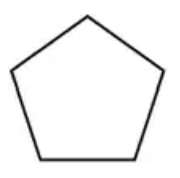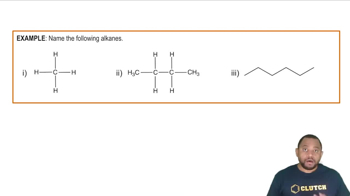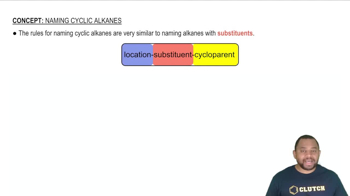Draw the condensed structural or line-angle formula if cyclic, for each of the following:
a. bromocyclopropane

 Verified step by step guidance
Verified step by step guidance Verified video answer for a similar problem:
Verified video answer for a similar problem:



 :36m
:36mMaster Rules for Naming Cyclic Alkanes Concept 1 with a bite sized video explanation from Jules
Start learning